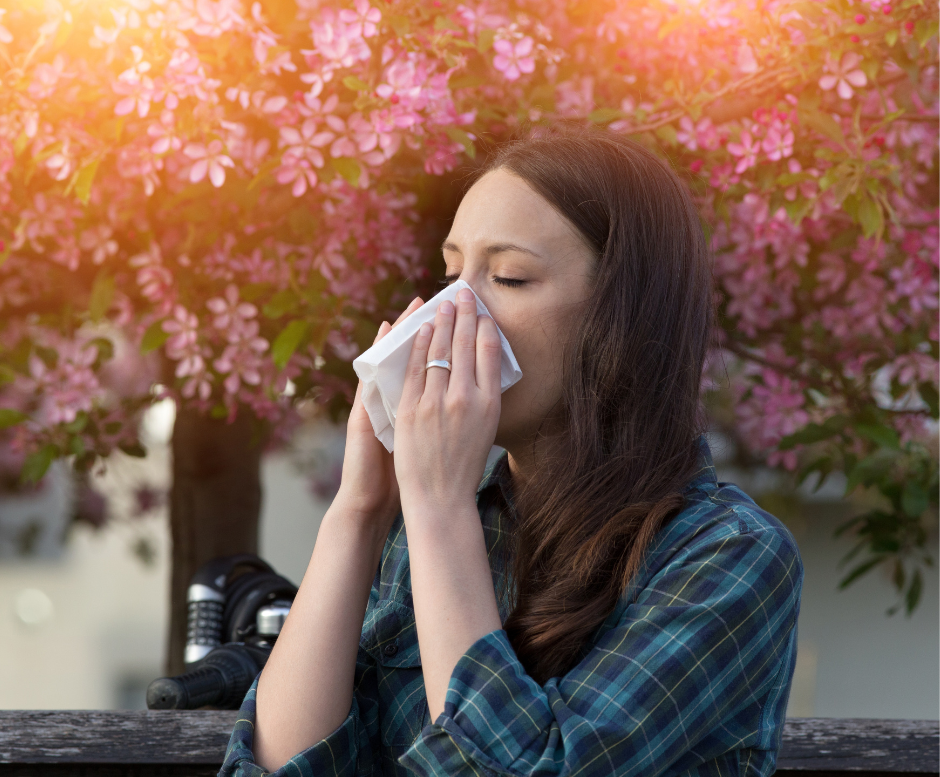Air pollution is like that noisy neighbour who won’t let you sleep: annoying and always present. And as if that wasn’t enough, it also combines with allergies to make your life impossible! According to experts, the increase of carbon dioxide in the atmosphere lengthens pollination periods, turning cities into all-you-can-sneeze buffets for allergies.
Allergies and air quality
Respiratory allergies and air pollution are two closely related issues, especially in the era of climate change.
Recent studies have shown how rising temperatures and climate variations affect the duration and intensity of pollen seasons, thus aggravating allergic symptoms in sensitive persons.
Furthermore, air pollution can not only worsen existing allergies but also increase the risk of developing new hypersensitivities. It is estimated that there will be a 5% increase in allergy cases over the next five years.
Pollutants such as nitrogen dioxide (NO2), which is mainly found in vehicle emissions and industrial plants, and ozone (O3), which is formed through chemical reactions between other pollutants in the air under the action of sunlight, can cause inflammation and damage to the respiratory tract, increasing sensitivity to allergens.
Fine particles (PM2.5), emitted by fossil fuel combustion, forest fires and other human activities, are particularly dangerous as they can carry allergens directly into the deepest parts of the lungs.
Sulphur dioxide (SO2), which mainly comes from burning coal and oil, and volatile organic compounds (VOCs), found in many household chemicals, solvent paints and petrol, are also known for their respiratory tract irritant properties that can exacerbate allergic conditions.
Symptoms resulting from exposure to these pollutants can range from mild irritation to more severe conditions such as asthma.
Allergies and biodiversity
The connection between allergies and biodiversity is a fascinating example of how human actions can have knock-on effects on the environment. The interaction between allergies and wildlife health is an emerging field of study that reveals how the environment affects wildlife in complex ways.
While allergies themselves are a response of our immune system, activities that increase allergens, such as intensive agriculture and pollution, can alter ecosystems. These practices can reduce the diversity of plants and animals, compromising the resilience of ecosystems and their ability to adapt to change.
Air pollution, for example, can aggravate the respiratory condition of animals or induce new diseases, while the destruction of natural habitats increases exposure to pollen and moulds, potential allergens for some species.
Finally, infectious diseases, often overlooked, can be aggravated by these environmental factors, with knock-on effects on biodiversity and animal (as well as human) health.
Reducing allergies and carbon footprint
Reducing greenhouse gas emissions is key to improving the quality of the air we breathe and, consequently, to reducing the incidence of respiratory diseases, including allergies.
Protecting ecosystems not only preserves biodiversity, but also helps maintain natural balances that can influence the spread of allergens.
On a personal level, conscious choices can have a big impact: environmentally friendly products, a diet rich in vegetables, and attention to reducing allergens in the home are all steps towards a healthier environment.
Avoid burning pruning clippings in the open field, but prefer composting or self-composting, producing quality humus for the plants.
Furthermore, choosing plant-based, local and seasonal foods not only reduces the carbon footprint, but can also limit exposure to allergens from other geographical areas.
These actions, if taken on a large scale, can lead to significant changes in air quality and public health.
To reduce allergies, it is important to take a number of preventive and curative measures. At the environmental level, as already emphasised, the reduction of greenhouse gas emissions is crucial.
Protecting ecosystems and promoting biodiversity are key steps in maintaining natural balances that limit the spread of allergens.
It is also helpful to reduce household allergens through frequent cleaning and the use of HEPA filters for indoor ventilation.
With regard to diet, the intake of foods rich in natural antihistamines, vitamin C and Omega 3 help in decreasing the inflammatory state and allergic reactions.
Play for the planet!
